 Not an event planner
Not an event planner
When you hear “event management,” you may think of companies that can book your hotel stay, handle food and beverage, print name badges, coordinate senior management’s travel, and so on. But there are other areas of conference- and event-management that are increasingly being outsourced—and for good reason.
What people often don’t consider is the “meat and bones” that make up the actual conference. This includes programming the content and selecting speakers for industry-specific conferences, creating and implementing a multi-tiered marketing plan and budget, as well as managing the entire sponsorship sales process.
I have recently been approached several times over the past few months for help with conference-sponsorship sales. In these discussions, I have heard that it is very hard for clients to find a company that specializes in such, which was an interesting insight.
At The Karlyn Group, we are finding that many companies (typically publishers) simply aren’t able to handle all aspects of an event internally. Their marketing and sales teams, while skillful, don’t know where to begin. Many of these organizations are used to dealing with magazine audience development, writing proposals, or selling advertising in print and online. And they don’t realize that an event budget is often entirely separate from those other activities. Finding an audience that is looking to attend conferences, or—even more so—sponsor events, can feel like finding a needle in a haystack.
Typical Conference Work
Event programming: this can be an industry term, but “programming” involves researching a topic, looking at the competitive landscape, surveying the industry, creating a positioning paper and, from there—fleshing out an event agenda and recruiting speakers for sessions. The sessions can involve case studies, panels or keynotes, depending on the event. And speakers should ALWAYS be thought leaders; people who are well known in their field and are not vendors looking to make a sales pitch.
Event marketing
This isn’t too far off from other kinds of marketing. But you need to make sure your messaging is targeted and your lists are segmented. For a potential attendee, a conference is not mandatory, and it is often hard for them to take time out of the office. So it’s critical that your programming strike on a pain point for its intended audience…something they will learn, someone they will meet, professional learning credits they will receive, or the opportunity to get work. Creating a multi-channel plan is most important because you will have to reach these potential attendees often. Using only mail, or email, or social media won’t cut it. You need a blend of all of the above, and you need to be very creative on how you do it.
Sponsorship Sales
If you know how to do this, you are one in a million. It is very tedious and time consuming to find out who controls this budget, and then determine who will part with precious funds to put it toward your event. At The Karlyn Group, we work on events that sell out, which are rare, and even then it takes a lot of convincing (and multiple conversations). Not unlike other sales, you have to form very strong relationships with prospects and clients and stay in touch even when you don’t have events happening. You also have to be prepared to create customized packages with nearly every sale…ROI controls the success of the deal. Make sure you have a great CRM system, so you can be strategic on how you are reaching your prospects, and how often.
There are a lot of moving parts to events, conferences, banquets, user forums, etc. Without a clear understanding of each part of the business, it is hard for companies to know if they can handle this work internally.
If you have an idea, or an event/conference you need help with, don’t hesitate to call us for a free consultation…we have a very successful track record and have exceeded our goals continually. We love what we do, and we love our clients.
More on us here.


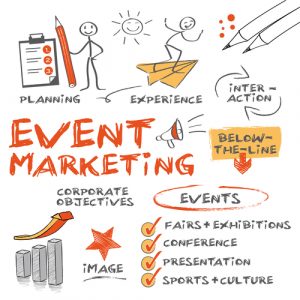 There are many types of industry-specific events each year. Getting involved with such an event is a great tactic to help boost your brand, sales, clientele and more.
There are many types of industry-specific events each year. Getting involved with such an event is a great tactic to help boost your brand, sales, clientele and more.  Many of the email and marketing systems available today can do a lot of
Many of the email and marketing systems available today can do a lot of 
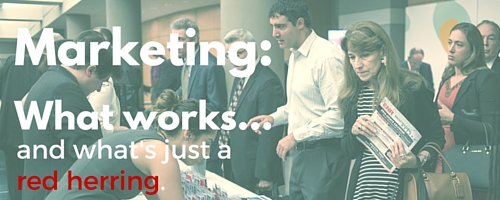
 It’s still necessary, however, to develop a solid understanding of the relationship between your brick-and-mortar or e-commerce space and its online footprint. It’s always important to ask yourself the big questions before deciding where to dedicate your time when building your strategy:
It’s still necessary, however, to develop a solid understanding of the relationship between your brick-and-mortar or e-commerce space and its online footprint. It’s always important to ask yourself the big questions before deciding where to dedicate your time when building your strategy: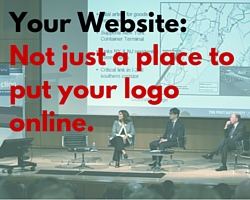

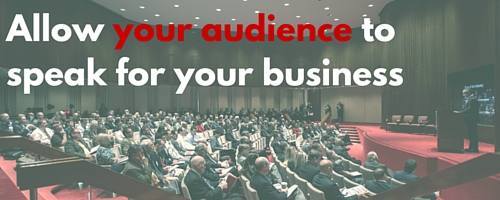
 Not an event planner
Not an event planner

 Often during virtual meetings attendees are distracted and multitasking, leading to lower productivity according to The Maritz Institute. Face-to-face interaction allows for attendees to maintain focus and to interact with the speaker and each other.
Often during virtual meetings attendees are distracted and multitasking, leading to lower productivity according to The Maritz Institute. Face-to-face interaction allows for attendees to maintain focus and to interact with the speaker and each other.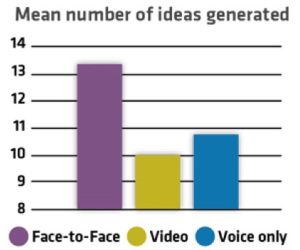 For example, at this women’s conference organized by the Karlyn Group, a networking event was set up in order to allow for women to create meaningful business connections. Speakers sold their books, snacks were served, and women had a chance to engage in face-to-face interaction with each other. As opposed to a web seminar, where contact is terminated at the conclusion of the event, the women who attended this conference have continued to attend in subsequent years, and have reported increased business success.
For example, at this women’s conference organized by the Karlyn Group, a networking event was set up in order to allow for women to create meaningful business connections. Speakers sold their books, snacks were served, and women had a chance to engage in face-to-face interaction with each other. As opposed to a web seminar, where contact is terminated at the conclusion of the event, the women who attended this conference have continued to attend in subsequent years, and have reported increased business success.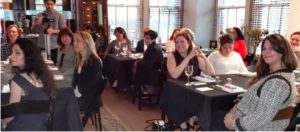 Face-to-face interactions are not only important for one on one meetings, but can be beneficial for larger groups. Face-to-face interactions can also increase the attractiveness of a meeting or event, especially when the destination is set to be someplace inviting to guests. Holding meetings in unique settings such as on a boat or a bowling alley can engage attendees in new ways. These types of events facilitate team building and increase office morale. While these types of meetings may be more costly, they yield higher rewards as relationships are strengthened and productivity is increased. In the Fearless event pictured to the right, The Karlyn Group partnered with POKERprimaDIVAS to uniquely merge business with pleasure. This event showed attendees how to sharpen their skills needed in the deal-making environment by practicing the game of poker with a great group of professionals. Women bonded, made connections, and built business relationships in a unique and fun environment. Amy Ecolino a senior manager from McGraw Hill Financial reported having “made real relationships with real people, instead of feeling like I was simply another icon on their computer chat”.
Face-to-face interactions are not only important for one on one meetings, but can be beneficial for larger groups. Face-to-face interactions can also increase the attractiveness of a meeting or event, especially when the destination is set to be someplace inviting to guests. Holding meetings in unique settings such as on a boat or a bowling alley can engage attendees in new ways. These types of events facilitate team building and increase office morale. While these types of meetings may be more costly, they yield higher rewards as relationships are strengthened and productivity is increased. In the Fearless event pictured to the right, The Karlyn Group partnered with POKERprimaDIVAS to uniquely merge business with pleasure. This event showed attendees how to sharpen their skills needed in the deal-making environment by practicing the game of poker with a great group of professionals. Women bonded, made connections, and built business relationships in a unique and fun environment. Amy Ecolino a senior manager from McGraw Hill Financial reported having “made real relationships with real people, instead of feeling like I was simply another icon on their computer chat”.